🧬 AP Biology Unit 7
13-20% AP Weighting
Topics
7.1 Introduction to natural selection
7.2 Natural Selection
7.3 Artificial Selection
7.4 Population Genetics
7.5 Hardy-Weinberg Equilibrium
7.6 Evidence of Evolution
7.7 Common Ancestry
7.8 Continuing Evolution
7.9 Phylogeny
7.10 Speciation
7.11 Extinction
7.12 Variants in Populations
7.13 Origin of Life on Earth
7.1-7.2, 7.8 - Natural Selection
Lamarckian Evolution
Lamark came up with his own incorrect idea of evolution before Darwin. His idea of evolution was “use it or lose it.” Those who worked on a certain body part would genetically improve it. Such as a giraffe starting as a deer but they just stretched their neck a lot. He was wrong, but inspired others to study evolution.
Darwinian Evolution
Darwin's ideas focused on descent with modification. He traveled to the Galapagos islands and noticed finches on each island were very similar but were different and ate different foods. He observed/inferred several things:
Individuals in a population vary in their heritable traits
Species always produce more offspring than their offspring can support, but many of them die young.
Individuals who survive longer are more likely to pass on their traits to offspring.
The unequal ability of individuals to survive leads to the population having more beneficial mutations.
Natural Selection occurs through natural forces, such as predators and disease. Artificial Selection occurs through humans breeding organisms for specific traits, such as crops or animals. (more later)
Evolution
Most evolution is microevolution, a change in allele frequency in a gene pool. Microevolution is caused by natural selection, gene flow, and genetic drift. Macroevolution occurs over large periods of time. However, HOX genes can change an organism dramatically, such as by adding another limb.
Discrete Characteristics are characteristics that can be easily categorized, such as blue vs brown eyes or what blood type you have. They are sometimes called “either-or” traits, because you have this phenotype or that phenotype. Quantitative Characteristics exist on a spectrum and are often affected by multiple genes or external factors.
7.4, 7.12 - Population Genetics
Normally, the gene pool trait distribution looks like a bell curve.
Directional selection favors one side of the gene pool.
Disruptive selection favors both extremes.
Stabilizing selection pushes the gene pool to be similar in the center.
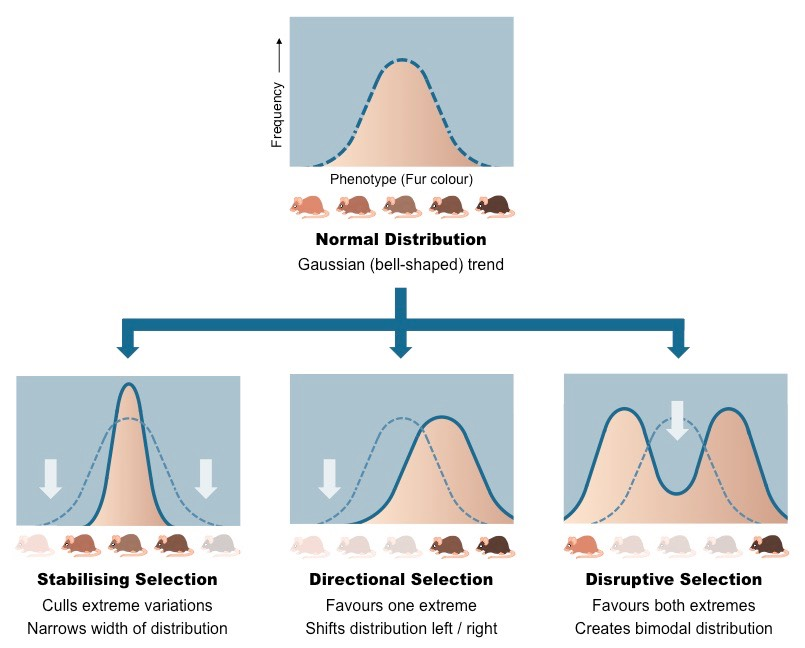
Genetic Drift
A population changes by chance, not due to natural selection. There are two major examples of this.
The Bottleneck Effect - A natural disaster occurs and the surviving individuals survive by chance. The new population has different allele frequencies than the old one.
The Founder Effect - When random organisms get separated from the population and “found” a new population. These organisms aren’t a true representation of the original population and may have different genes.
Sexual Reproduction is used to increase genetic diversity. It comes with some negatives, though, such as only half of the population being able to reproduce. Not all the males are necessary for reproduction, since most animals aren’t ‘loyal’ to their partner. This leads to sexual dimorphism, differences between males and females. The males have traits to impress the females, but those traits often end with them getting killed. The males with those traits are chosen to breed and therefore pass on their genes, called “sexual selection.” Only the strongest survive, though.
Balancing Selection, where the allele frequency does not often change, is often driven by heterozygous advantage. This is where having a heterozygous genotype is advantageous, but a recessive homozygous genotype is dangerous. Those with heterozygous genotypes are positively selected, while those with recessive homozygous are negatively selected heavily. One example of this is sickle cell anemia. Those with one of these alleles are immune to malaria, but if you have both, you are often very sick. This is an example of how being diploid preserves genetic diversity and variant balance in populations.
Inclusive Fitness is natural selection through the act of helping others of the same species who are less fit so they can survive and reproduce. This is also known as altruism. Giving back is called reciprocal altruism. There are 3 key variables in altruism: Benefit to the recipient B, Cost to the altruist, C, and coefficient of relatedness, aka now close they are familial related, r.
rB>C
Kin selection is natural selection through altruism towards relatives.
7.3 - Artificial Selection
Artificial selection requires human interference, humans selectively breed certain plants or animals to increase desirable traits, humans select individuals with more favorable traits and increase their rate of survival and reproduction. Farmers will breed crops to increase desirable traits such as being large, growing quickly resistant to pesticide. Breeding domesticated wolves has led to the differences in the domestic dog breeds.
Drug Resistant bacteria
The bacteria Staphylococcus (Staph) is a common infection and is often treated with antibiotics. We have artificially selected the bacteria that are resistant to bacteria by killing those not resistant. One strain, MRSA, is very dangerous as it has become resistant to most antibiotics. we created pesticide-resistant pests the same way.
7.5 - Hardy-Weinberg
The Hardy-Weinberg Equilibrium is used to describe a theoretical population that is not evolving. It has five conditions that must be reached.
The population is large to combat genetic drift
No migrations
No net mutations
Random mating
No natural selection
You must know how to use the Hardy-Weinberg equation
p+q=1
p2+2pq+q2=1
7.6 - 7.7 - Evidence of Evolution and Common Ancestry
Humans, along with most mammals, are tetrapods. (four limbs) This is because most mammals descended from the same animals. This leads to them having homologous structures. Whales, humans, cats, and bats all have the same bones, but they are all evolved to different sizes and shapes to fit the animals needs. The bones are homologous structures.
Wings of birds and the wings of bats are analogous. While they serve the same function, they evolved separately and are made from completely different materials and structures. This comes from convergent evolution, not common ancestry.
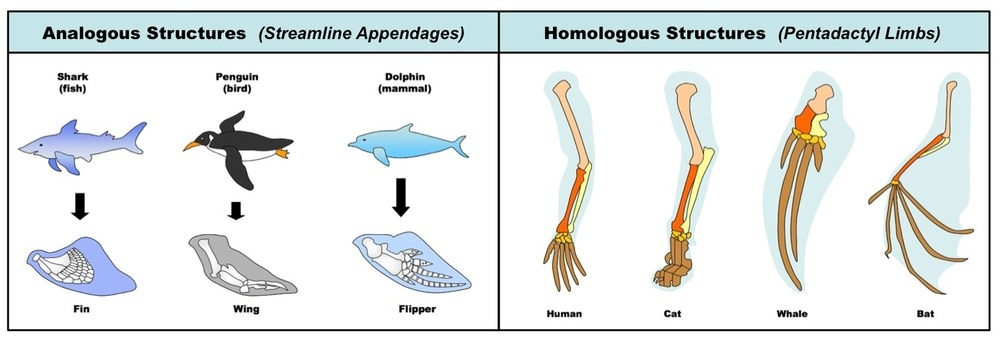
Vestigial structures are structures that remain from their ancestry but no longer serve a purpose. Examples of this are snake’s pelvis, whales’ hip bones, and humans’ appendix and tailbone.
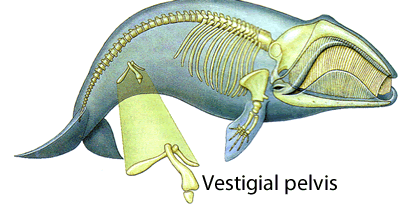
7.9 - Phylogeny
Phylogenesis is the evolutionary development and diversification of a species or group of organisms, or of a particular feature of an organism. It is basically evolution/speciation. Phylogeny is the study of this.
For AP Biology, you must know how to read phylogeny trees.
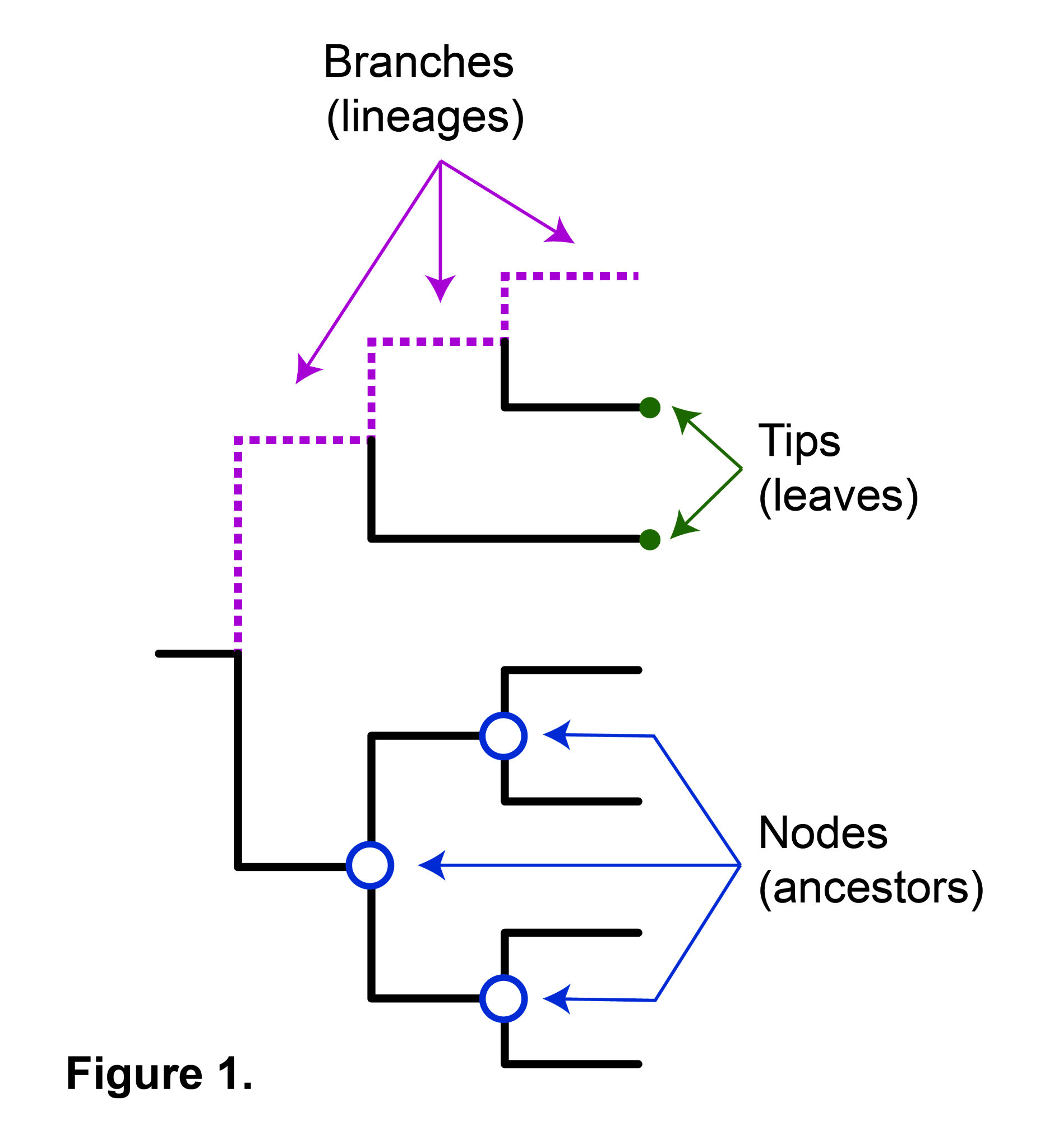
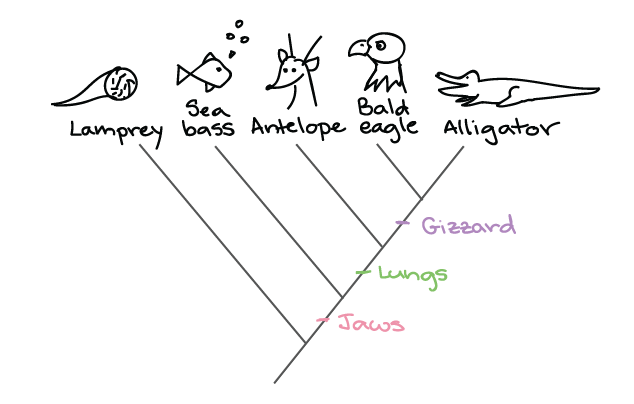

7.10 - Speciation
The definition of species depends not on similarities but their ability to breed together (interfertility). Two birds can look identical but not be the same species. If two organisms can make viable babies together, they are the same species. There are prezygotic and postzygotic barriers.
Prezygotic Barriers
Habitat Segregation - The organisms are separated by distance. Sometimes, they can breed with each other, but don’t due to distance. Still technically considered different species
Temporal Isolation - Different breeding periods/times when in heat
Behavioral Isolation - Animals require mating rituals, and if they do not have the same ritual, it is unlikely they will be willing to mate.
Mechanical Isolation - “The parts don’t fit”
Gametic Isolation - The substrate on the sperm is supposed to bind to the receptor on the egg so the sperm is allowed into the egg. Different animals have different substrates/receptors, so the sperm will not be able to enter the egg.
Postzygotic Barriers
Reduced Hybrid Viability - Will it survive birth/childhood? Often not.
Reduced Hybrid Fertility - Most hybrids are infertile, so the “species” can’t continue on.
Hybrid Breakdown - Are the children of hybrids fertile/able to survive? Hybrid babies are rare are often die during pregnancy/birth/infancy
Types of Speciation
Sympatric Speciation is when, within a population, a new variant emerges, and grows from there, becoming a new species. Ex: A polyploid is “born”, (who uses asexual reproduction) and if it is viable, it reproduces from there, making more of its new species.
Allopatric Speciation is where a population is divided by a physical barrier preventing gene flow. The two groups will evolve separately and become separate species.
7.11 - Extinction
Extinction is the death of all organisms in a population or species. Species go extinct if they are unable to adapt to their environment. They were not fit enough. The exceptions include mass extinction events, natural disasters, or human interference, which have little to do with fitness. There have been 5 mass extinction events in earth’s history.
Regional extinction - where no organisms of a certain species exist in a region.
Extinction in the wild - There are no wild animals of a certain species, but humans have some surviving in captivity
Extinction - There are no more organisms of a species anywhere.
7.13 - Origin of Life
Theories about the Origin of Life
How Life (Chemically) formed:
Abiotic Synthesis of small organic molecules naturally
Joining of these small organic molecules together to make macromolecules
Packing of molecules into protocells
Origin of self-replicating molecules
Theory - “Primordial Soup”
They followed the steps above. The first living things ate their surroundings to survive. They were “born” and lived in a primordial soup of random molecules and water. This works under the assumption the earth’s atmosphere was reducing at that point.
Endosymbiosis
It is theorized that Eukaryotic cells were created through endosymbiosis. A heterotroph, something that eats something else, eats another heterotroph by engulfing it. However, it failed to digest it. It ended giving excess food to this pre-mitochondria (eaten heterotroph) like “giving scraps to the dog.” The mitochondria provided us with excess ATP. They formed a symbiotic relationship. Same with the chloroplast, with the heterotroph eats an autotroph. This is why some organelles are double-membrane bound.